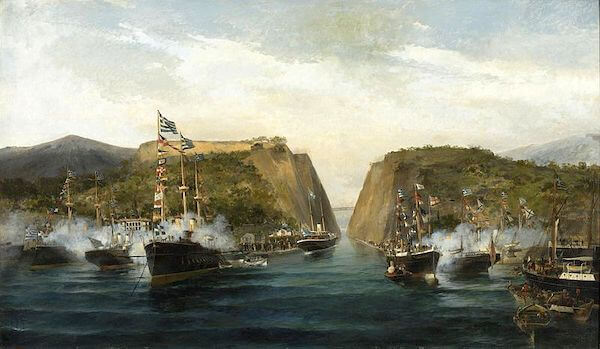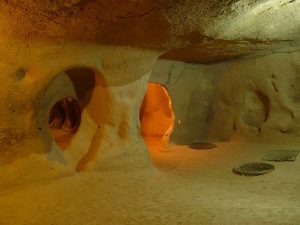Or: Kitty Litter Paleontology

My watchdog never needs walking.
We usually think of fossils in the context of museums, but you might be surprised to hear that they're probably in your home without you knowing.
The first way this happens is pretty obvious: if you've got limestone as part of the construction of your house. Limestone is almost universally fossil-bearing. In fact, many types of limestone are almost entirely made up of fossils. So, if you have limestone in your house, you've probably got fossils.
Of course, fossils can be found in other rocks as well, such as certain sandstones and mudstones, though limestone is the most common fossil-bearing rock used in construction.
Next is in kitty litter. Bentonite clays are used in countless industrial settings, but they also have one extremely common use inside the home—as the main ingredient of most kitty litter products. Bentonite clay is highly absorbent, making it ideal for this purpose.
Another thing bentonite clay is famous for? Occurring near fossil formations. The Morrison Formation, the geological formation where Dinosaur National Monument is found, is also heavily mined for bentonite clay. There have also been plenty of reports of kitty litter mining companies in Canada knowingly destroying fossil beds for more profit. So... your cat might be doing its business in dinosaur bits.
Third is diatomaceous earth. This fine white powder is frequently used as a cleaning product in the home. Applications of it can kill many types of insect infestations. The actual mechanism by which it does so is a little complicated, but it essentially dehydrates the insects to death. (Sometimes it's also used in kitty litter.) Diatomaceous earth is a sedimentary rock composed entirely of fossilized diatoms, a type of ocean-going microorganism that grows a silica-based shell.
Finally, there's good old-fashioned chalk. Chalk is simply an accumulation of the shells of tiny marine microorganisms, just like diatomaceous earth. Instead of being formed of silica-shelled organisms, however, it's formed out of calcite-shelled organisms known as coccolithophores. (Interestingly, the Cretaceous is actually named after the fact that more chalk was deposited around the world than during any other geological era—not, as you might expect, due to anything to do with dinosaurs.)
So, whenever your kids are drawing on the sidewalk with chalk, they're drawing with fossils.
The Yard Ramp Guy®: Honoring Industry Partners
This week, my friend The Yard Ramp Guy discusses a gaggle of types of "sand pads" and then settles on one in particular that's part of his inventory. It's a fascinating read.
Check out his blog HERE.





